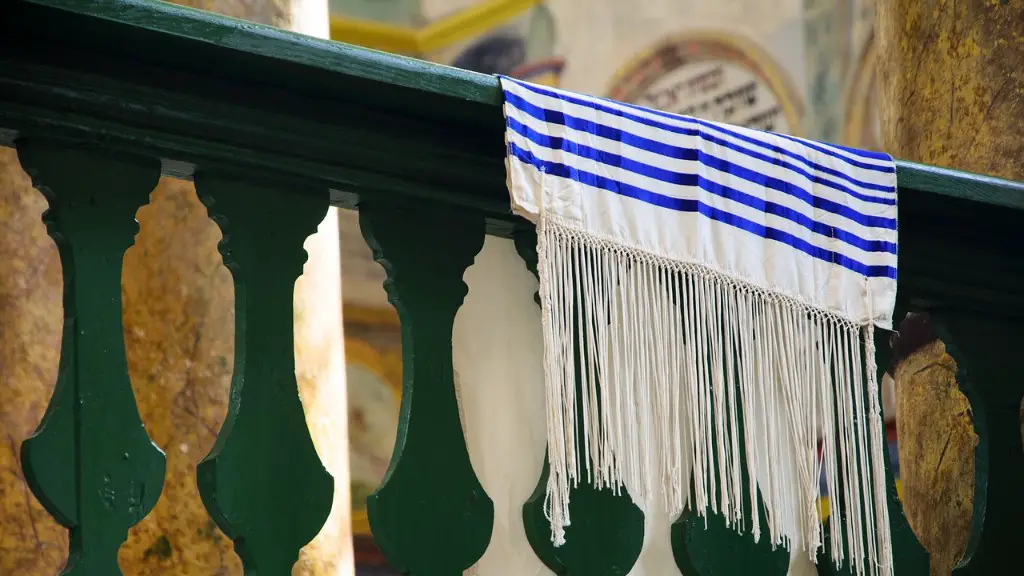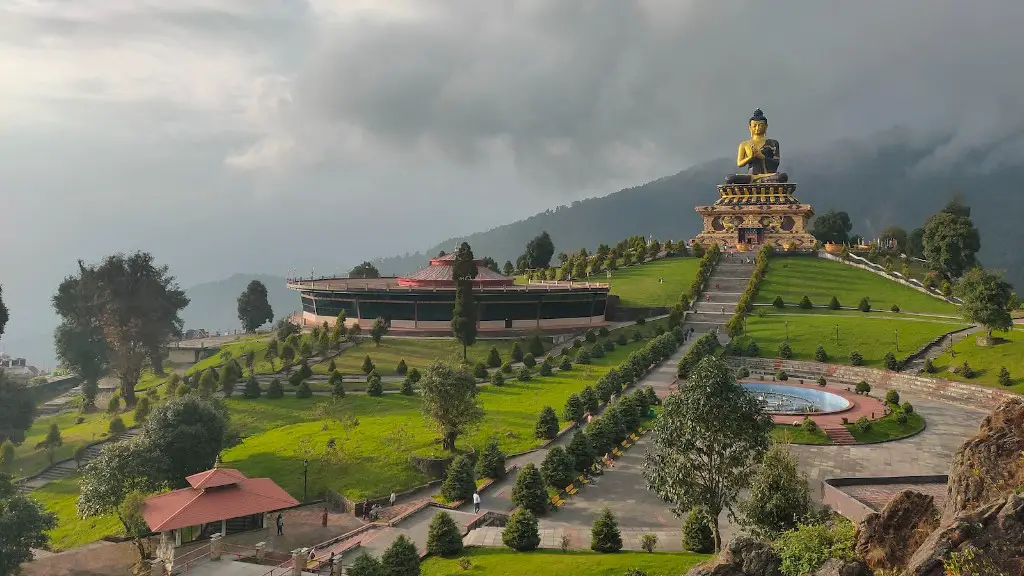Sheol is an important concept from the Jewish faith that has a variety of meanings according to different interpretations. The term originates from the Hebrew Bible, where it is typically translated as “the abode of the dead” or “the realm of the dead”. It is described in a number of different ways, such as a place of darkness, a place where the righteous and unrighteous alike will meet for final judgement, or a place of suffering and relief. In some cases, Sheol is also seen as a kind of afterlife or eternal resting place. Scholars point out that Sheol is probably best understood as a metaphor, rather than a literal place.
Despite being mentioned in scripture, the concept of Sheol has been largely part of Jewish folklore. It is thought to be the realm in which spirits reside after death. The souls of the dead can be found in a deep grave-like area where there is no light, or a dark pit. In this underworld, the dead can never ascend to heaven and are instead doomed to wander in darkness. They are subject to the whims of the guardian of Sheol, Asmodeus, who holds their fate in his hands. It is believed that the souls of the wicked remain in Sheol for eternity, but that the souls of the righteous can be liberated and ascend to heaven.
Much of what is known about Sheol is based on interpretations of the Bible, as there are few direct references to the concept. For example, in the Book of Isaiah, there is a reference to Sheol being “the lowest of the depths of hell”. Additionally, it is mentioned in various parts of the Hebrew Bible, such as the Book of Job, the Psalms, and other books. In other texts, particularly in the Mishnah and Talmud, Sheol is thought to be a place of retribution, where the wicked are judged and punished, while at other times it is seen as a place of mercy, where the righteous can find respite.
The concept of Sheol has been understood differently by various religious groups. For example, in Christian tradition, it is sometimes seen as a place that only serves to punish the wicked, rather than a place of rest for the righteous. Additionally, some sects of Judaism have rejected the concept of Sheol entirely. For example, the Karaites, an offshoot of mainstream Judaism, interpret the references to Sheol in the Bible as referring to a natural afterlife and not an otherworldly realm.
Despite the numerous interpretations, it is likely that the concept of Sheol will remain a part of Jewish faith for many years to come. It has been referenced in literature and art, and provides a powerful insight into the mysteries of death and the afterlife. Understanding Sheol and identifying the different ways it is interpreted offer the potential to better comprehend the spiritual aspects of the Jewish faith.
Geographical Location
The exact geographical location of Sheol is not known, though it is usually believed to be located below the earth. The most common view is that it lies under the seven layers of earth, or beyond its boundaries. Popular locations often cited as being close to the realm of Sheol include the Cocytus River and the River Styx. While these are mentioned in Greek mythology, their association with the Jewish faith is debated.
The dead are able to cross into the realm of Sheol either through its gates or using a secret path. This journey is often described as a descent, during which the dead face obstacles along the way. It is said that the gates to Sheol are guarded by angels, who can open them when the souls arrive. The Book of Isaiah also describes “raptors”, which are believed to be creatures from Sheol, who come to take the dead away from the living.
There is much debate over whether Sheol is a physical location, or a spiritual one. But whatever its nature, it is clear that the concept of Sheol is an important part of Jewish tradition. It is seen as the place of final judgement, where the souls of both the righteous and the wicked will ultimately meet.
Rites and Rituals
Most Jewish communities have certain rites and rituals that are performed to remember and honor the deceased. While the details may vary from one local community to another, many traditions revolve around prayer and remembrance. Another important ritual that is sometimes observed is the reading of the Kaddish, a prayer for the dead. This is believed to help lift the spirit of the deceased and guide them on their journey back to Sheol.
In some Jewish communities, the initiation of the soul is traditionally performed when a person dies. This rite involves welcoming the soul into Sheol and giving it an Illuminated Scroll of Invocation, which is believed to guide it on its journey. The family members or close friends of the deceased then perform certain rites, such as reading certain prayers or lighting memorial candles, to guide the deceased’s soul on its journey back to Sheol. Other rituals involve reciting Kaddish or placing a pile of rocks near the deceased’s grave as a sign that the soul is no longer bound by the constraints of the material world.
Additionally, a memorial service is held on the anniversary of the deceased’s death, during which the lights in the house are extinguished in memory of the deceased. People may also visit the grave of the deceased on the anniversary, to reflect on their memory and honor their resting place. This is believed to help the deceased’s spirit find its way back to Sheol.
Mythology and Folklore
The concept of Sheol appears in a number of myths and stories. For example, it is believed that Sheol is where the Biblical character, Samson, was sent after he misused his strength. Additionally, in Jewish folklore, Sheol is often the place to which the wicked are banished to, while the righteous ascend to heaven. This view is based on the fact that Sheol is usually described as a dark and gloomy realm, while heaven is seen as a place of light and joy.
In some narratives, Sheol is seen as a literal underworld, where the forces of evil are locked in eternal combat with the forces of good. This idea appears in numerous religious texts, including the works of Kabbalah, which is an ancient and influential form of Jewish mysticism. In the Kabbalah, Sheol is the domain of the fallen angels, and a place where the righteous will ultimately come to consume the wicked.
Sheol is also a popular topic in art and literature. It has inspired works of art, as well as a number of books and films about the afterlife. Notable works include Dante Alighieri’s classic, The Divine Comedy, which features a journey through Hell and Purgatory, and Robert E. Howard’s short story, The Valley of the Worm, which is set in a dark and mysterious underworld.
Influence and Legacy
The concept of Sheol has had a great influence on both Jewish and non-Jewish traditions. It has become a popular topic of debate and discussion, and continues to exercise the imagination of writers, artists, and theologians. Its legacy has also been felt in popular culture, with references to Sheol appearing in various video games, films, and television shows.
In conclusion, Sheol is an important concept in the Jewish faith and has deeply influenced both religion and popular culture. Its meaning and implications have been debated and discussed for centuries, and its legacy remains strong today. The concept of Sheol is a reminder of the mysterious nature of death and the afterlife, and it serves to remind us that our fate is ultimately in the hands of a higher power.
Modern Interpretations
Modern interpretations of Sheol have changed from the classic view as described in ancient texts. For example, in some sects of Judaism, Sheol is seen as a place where the individual soul can experience spiritual growth and purification. Rather than being a place of punishment or oblivion, Sheol is viewed as a place of transformation, where the individual soul can grow and mature before returning to the spirit world. This view of Sheol has been gaining popularity among some modern Jewish sects, including the Kabbalists.
In addition, in some interpretations, Sheol is described not as a physical place, but as a spiritual state of being. This view is founded in the belief that the soul exists beyond the material world, and that Sheol is a place of spiritual purgation that exists in the spiritual realm. This view of Sheol focuses on the notion that the soul can transcend earth and gain a higher level of spiritual understanding and clarity.
Modern conceptions of Sheol are closely linked to the notion of reincarnation, which is an idea found in some modern Jewish sects. According to this view, death is seen not as an ending, but as a new beginning, and Sheol serves as the realm in which the individual soul can go through a process of transformation before it is ready to be reborn. This view of Sheol has helped to redefine the concept, and to look beyond the traditional views of the afterlife.
Conclusion
The concept of Sheol is an important part of the Jewish faith and has gone through a variety of interpretations throughout the years. It is a complex and multi-faceted concept that should be explored and understood in order to gain a deeper understanding of the many facets of Jewish spirituality. Sheol is seen as the abode of the dead, the place of final judgement, and the place of spiritual growth, and remains an important part of the Jewish faith today.


